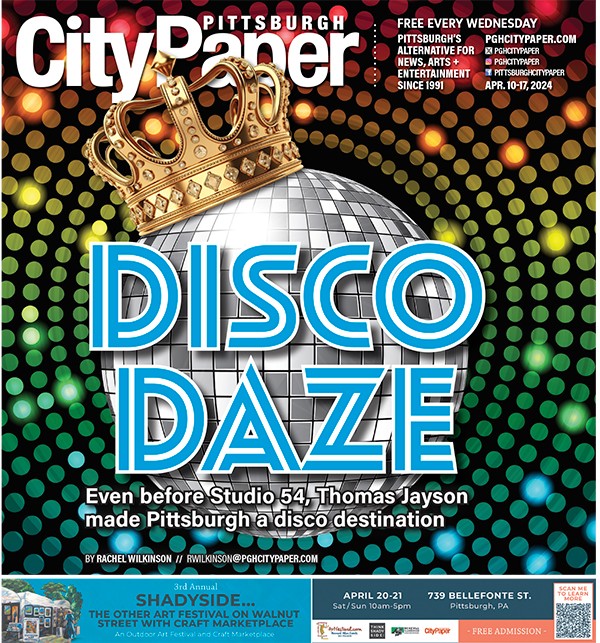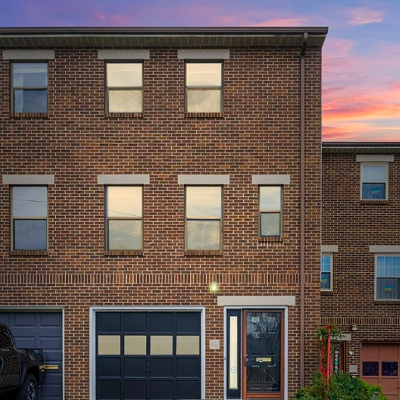The dimensions of the pyramids, the calendars of the Aztecs, and the Port Authority bus-numbering system ... for generations, mystics and numerologists have sought meaning within these esoteric number sequences. Do they betoken some previous intervention of God? The presence of an alien intelligence?
In fact, according to Fred Mergner, they signifiy something even more mysterious: the mindset of 1960s transit planners.
If the Port Authority ever goes out of business -- and it just might, given the funding situation in Harrisburg -- Mergner could probably find work cracking codes for the National Security Agency. As a kid, he recalls, he was able to decipher the route-number system by looking at old transfer passes. Now, as the supervisor of service planning and rider information, he does his best to explain the system to others.
When the Port Authority was created in the early 1960s, Mergner says, it had to consolidate the operations of nearly three dozen privately-owned bus and trolley operators -- each with its own route numbers. "The people here had to come up with a way to unify this system," he says. They did so by breaking the transit map down into a series of numbered "corridors." Beginning with the Allegheny River and moving counter-clockwise, they assigned each route a first digit that reflected the area it served. The 1A New Kensington bus, for example, travels up the Allegheny to New Kensington. Buses in the 40s and 50s serve southern neighborhoods, the 60s and 70s carry riders east, and so on.
The second digit refers to the kind of route the bus takes within that corridor. Any bus route that ends in 1 or 6 -- like the 51 C -- is a "local" bus, one that connects to Downtown Pittsburgh with frequent stops on the way. A bus ending in 3 or 8 also connects to Downtown, but is a "flyer" or express route. The 53C, for example, offers express service to Carrick, should anyone need to reach Carrick in a hurry.
Buses that end in 4 or 9 are cross-town routes. Like the famed 54C -- or like my approach to girls in high school -- they tend to circle Downtown without ever getting too close to it.
Buses that end in 7 or 2 were once "premium" lines that used limited-access roads such as the Boulevard of the Allies or Bigelow Boulevard. "They went a little faster than buses going down Fifth or Forbes, so you paid a little more to ride them," Mergner says. The two-fare system was eventually discarded, though the trolley lines end with 2s and provide a cozier ride for southern suburbanites ... ensuring the old two-tier transit system lives on.
There are also "mini hubs" that radiate from areas other than Downtown Pittsburgh, says Mergner. "A big one was Homestead, because of the steel mills, and McKeesport. All those mini-hub routes will end in 5 and zero."
The most recent innovation is the three-digit route numbers, like the 500 route, which Mergner devised himself. These are "through routes" that combined older lines. The 500, for example, is the combination of routes served by the 71B and the 16C. But while you can combine the routes, you can't combine their numbers: That would add up to 87, which would screw up the whole numbering system. So Mergner created the three-digit numbering system. Unlike other buses, the three-digit routes don't use letters to specify a particular branch: That's because the electronic bus signs can display only a three-character-long route number. Even so, "It's almost unlimited how many routes we could offer," Mergner says. Assuming, that is, that funding from Harrisburg were as infinite as the numbers set.
So you see, there is a logical system at work, as rigorous as that which Pythagoras devised. And like Pythagoras, who tried to keep secret the existence of irrational numbers when he discovered them, Mergner is wary of revealing the system's imperfections. "You'll be able to find bus routes that are exceptions to the rule," Mergner confesses. "But I'm not going to tell you what they are."
But why these particular numbers? Why "6" for direct routes, for example? Mergner can't say -- or at least he won't. Perhaps there are Masonic secrets here that tell us where to find the bones of Mary Magdalene, or the treasure of the Knights Templar. Or perhaps, as Port Authority spokeswoman Judi McNeil posits, the explanation is simply this: "It was the wild, madcap 1960s."










